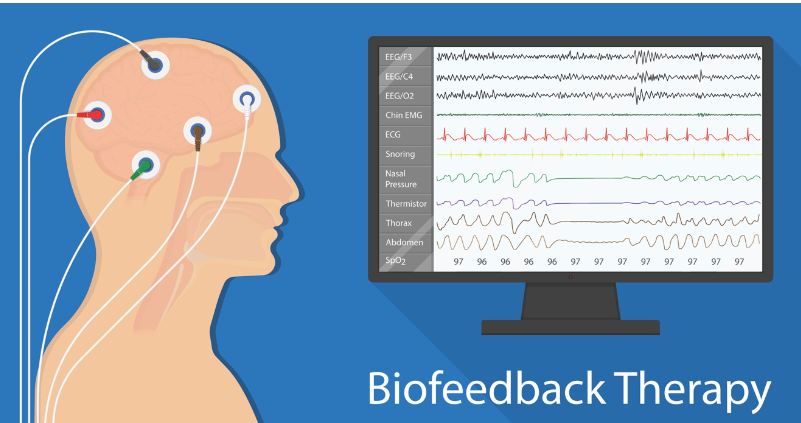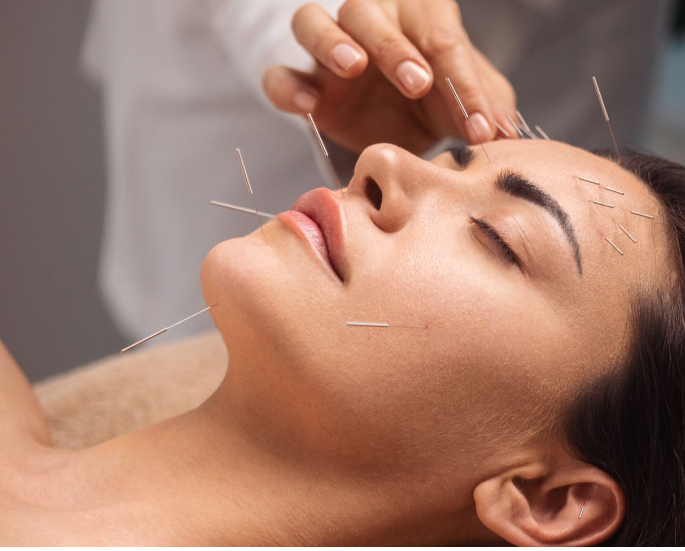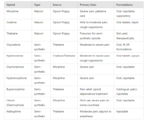The Abuse and Addiction to Painkillers Is a Global Health Issue
The abuse and addiction to painkillers is indeed a global health issue with significant social and economic consequences. The widespread availability of prescription painkillers has made them more accessible to people, leading to a growing number of individuals who become dependent on these medications. While not everyone who uses prescription painkillers will develop an addiction, there are risk factors, including a history of substance abuse and a family history of addiction.
It’s concerning that prescription medication overdose has become a major cause of death, surpassing the fatalities associated with illegal drugs like heroin or cocaine. Migraine sufferers, including teenagers, are often prescribed powerful painkillers to alleviate the severe pain and discomfort they experience during migraine attacks. While the intention is to improve their quality of life, some individuals may inadvertently develop a dependence on these medications.
Jason X’s experience serves as a stark example of how addiction to painkillers can begin innocently, even when prescribed by a healthcare provider for legitimate medical reasons. The euphoric and numbing effects of these medications can lead individuals to misuse them, taking them even when not needed for pain relief. This misuse can quickly escalate into addiction, with potentially devastating consequences for the individual’s health and well-being.
Addressing the issue of painkiller addiction requires a multi-faceted approach, including better education about the risks associated with these medications, increased access to addiction treatment and support services, and efforts to reduce the overprescribing of opioids and other painkillers. Healthcare providers also play a critical role in monitoring patients’ use of these medications and identifying signs of misuse or addiction early on to provide appropriate interventions.

Pain Relief Medications Have Lots of Undesirable Consequences
Frequent and prolonged use of abortive medications, such as pain relievers, for migraine relief can lead to undesirable consequences. While these medications may provide temporary relief, they can also result in increased headache frequency and other risks, including dependency, abuse, and side effects.
Common side effects of such medications include fatigue, weight changes, constipation, and stomach ulcers. More serious risks encompass damage to vital organs like the kidney, liver, and heart, as well as rebound headaches caused by medication overuse.
Finding alternatives to prescription medication for migraine management is essential to minimize these risks. Some individuals resort to making significant lifestyle changes to reduce their migraine triggers, which can impact their work, social life, and daily routines.
Dietary adjustments, like avoiding certain trigger foods such as aged cheeses, are also common practices among migraine sufferers. Many adopt strict sleep, dietary, and exercise regimens to prevent migraine attacks, often leading to limitations on social and recreational activities.
The misuse and abuse of prescription medications, including painkillers, is a significant issue, and it can sometimes start with legitimate medical use. In the case of migraine sufferers, the intense pain and discomfort they experience during migraine attacks can lead them to rely on medication not only for pain relief but also for the relief of other symptoms associated with migraines, such as nausea and sensitivity to light and sound.
It’s essential for healthcare providers to closely monitor patients who are prescribed painkillers and to educate them about the potential risks of misuse and addiction. Additionally, it’s crucial for individuals to be aware of these risks and to use prescription medications only as directed by their healthcare provider.
For migraine sufferers, it’s important to explore a range of treatment options beyond medication, such as lifestyle modifications, dietary changes, and alternative therapies like acupuncture and biofeedback. Finding effective ways to manage and prevent migraines can reduce the need for reliance on medication and the potential risks associated with its misuse.
What Are the Natural Migraine Reliefers ?
Natural remedies are another alternative to prescription medications, but their effectiveness can be variable, and they may be costly and inconvenient. These regimens often involve taking multiple individual supplements, some of which may contain unnecessary additives or ineffective ingredients. Methods like herbal supplements, biofeedback, and acupuncture treatments are also considered, but their reliability and proven efficacy in alleviating migraine symptoms may vary from one patient to another.
Identifying clinically proven substances that can genuinely help reduce both the frequency and intensity of migraines is essential.
1.Diet
Dietary changes can play a significant role in preventing migraine episodes, as certain foods are known migraine triggers for some individuals. Identifying and avoiding these trigger foods can be an effective strategy for migraine management. Here are some common examples of foods that can trigger migraines:
- Processed Meats: Foods like bacon, hot dogs, and deli meats often contain nitrates and nitrites, which can trigger migraines in some people.
- Alcohol: Various types of alcohol, especially red wine, beer, and certain liquors, can be migraine triggers. Alcohol can lead to dehydration and changes in blood flow, both of which may contribute to migraines.
- Chocolate: While it’s a beloved treat for many, chocolate contains caffeine and other compounds that can be migraine triggers for some individuals.
- Caffeine: While caffeine can provide relief for some migraine sufferers, excessive caffeine consumption or caffeine withdrawal can also trigger migraines. It’s important to find a balance that works for you.
To identify potential migraine triggers in your diet, consider keeping a symptom diary and tracking your food intake. Look for patterns of migraine episodes that may be associated with specific foods or beverages. Once you’ve identified trigger foods, you can work on eliminating or reducing them from your diet to help prevent future migraines. Additionally, consulting with a healthcare provider or registered dietitian can provide guidance and personalized recommendations for managing your diet to prevent migraines.

2. Essential Oils
Essential oils have gained popularity for their potential therapeutic benefits, including in managing migraine symptoms. Some essential oils like lavender, peppermint, chamomile, and basil have shown promise in relieving headache and migraine symptoms, likely due to their relaxing and anti-inflammatory properties. However, it’s important to use essential oils with caution and consult a healthcare professional, especially if you have specific health conditions or are pregnant or nursing.
Here are some key points to consider when using essential oils for migraines:
- Lavender, peppermint, chamomile, and basil oils are among those that may help ease migraine symptoms. However, further research is needed to determine their effectiveness fully.
- Essential oils should be used with caution in children, individuals with asthma, pregnant or nursing women, and those with certain medical conditions. Consult a healthcare provider before use.
- Essential oils should be diluted with a carrier oil before applying topically to the skin. This helps prevent skin irritation or sensitivity.
- When inhaling essential oils, use a diffuser to disperse the aroma into the air.
- Ensure that you’re using high-quality essential oils from reputable brands, as the FDA does not regulate their purity or quality.
- Always perform a patch test before applying any essential oil to your skin to check for adverse reactions.
3. Acupuncture
Acupuncture has been explored as a potential therapy for managing migraine headaches, and while some studies have suggested its effectiveness, it’s essential to approach this treatment option with careful consideration. Here are some key points to know about acupuncture for migraines:
- Acupuncture Technique: Acupuncture involves the insertion of fine needles into specific points on the body to stimulate targeted effects. It is similar to acupressure, but it relies on needle insertion.
- Research Findings: A systematic review conducted in 2020 examined studies on the effectiveness of acupuncture for treating migraines. The review concluded that acupuncture could be a safe and effective treatment option for migraine sufferers. However, it’s important to note that many of the studies included in the review were of low quality.
- Quality of Research: While some studies have shown positive results, more high-quality research is needed to establish the full extent of acupuncture’s effectiveness in managing migraines. The quality of research can vary, and larger, well-designed clinical trials are essential to provide more conclusive evidence.
- Choosing a Practitioner: If considering acupuncture as a migraine management option, it is crucial to find a registered and licensed acupuncture practitioner. They should have the necessary training and qualifications to ensure safe and effective treatment.
- Individual Response: Responses to acupuncture can vary from person to person. Some individuals may find significant relief from migraines through acupuncture, while others may not experience the same level of benefit.
- Safety: When performed by a qualified practitioner using sterile needles, acupuncture is generally considered safe. However, individuals should discuss any underlying health conditions or concerns with their healthcare provider before starting acupuncture treatment.
- Complementary Approach: Acupuncture should be considered as part of a broader approach to migraine management. It can complement other therapies and lifestyle changes, such as dietary adjustments, stress management, and medication, as recommended by a healthcare provider.

4. Massage
Massage can be a valuable complementary approach for managing migraines and relieving associated tension and stress. Here are some key points to consider regarding massage for migraine relief:
- Tension and Migraine Relief: Massaging the muscles in the neck and shoulders can help alleviate tension, which is a common trigger for migraines. Tension in these areas can contribute to headache pain, and massage may provide relief by reducing muscle tightness and promoting relaxation.
- Stress Reduction: Stress is a well-known trigger for migraines, and massage can have a calming and stress-reducing effect. By promoting relaxation, massage may help reduce stress levels, potentially lowering the risk of migraine episodes.
- Professional Massage: Professional massage therapists are trained to provide therapeutic massages that target specific areas of tension and discomfort. Seeking the services of a licensed massage therapist can ensure that the massage is tailored to your needs and performed safely.
- Self-Massage: For individuals interested in self-massage techniques, a clean tennis ball can be used to apply pressure to tight muscles in the shoulders and back. Rolling the tennis ball against the wall while applying pressure can help release muscle tension.
- Regular Practice: Consistency can be essential when using massage as a migraine management technique. Regular massage sessions, whether from a professional or through self-massage, may provide ongoing benefits in terms of tension and stress reduction.
- Complementary Approach: Massage should be viewed as part of a broader strategy for managing migraines. It can complement other lifestyle changes, such as stress management, dietary adjustments, exercise, and medication as recommended by a healthcare provider.
- Individual Response: The effectiveness of massage may vary from person to person. Some individuals may find significant relief from migraines through regular massage, while others may experience more modest benefits.
5. Herbal Supplements
Herbal supplements like butterbur and feverfew have been studied for their potential benefits in reducing migraine pain and frequency.
- Coenzyme Q10 for Migraines (
Coenzyme Q₁₀ (CoQ10)
- Riboflavin (vitamin B2) for Migraines

Here’s some important information about these herbal remedies:
- Butterbur (Petasites hybridus): Butterbur is a plant that has been investigated for its effectiveness in migraine management. The American Migraine Foundation suggests that a daily dose of 150 mg of butterbur for approximately 3 months may help reduce the frequency of migraine episodes. It’s important to choose a reputable source for butterbur supplements, as some products may contain harmful compounds called pyrrolizidine alkaloids (PAs), which can be toxic to the liver and other organs. Look for butterbur products that are certified as PA-free.
- Feverfew (Tanacetum parthenium): Feverfew is another herbal remedy that has been explored for its potential to reduce migraine symptoms. While it may be less effective than butterbur for some individuals, it has shown promise in certain studies. Feverfew is available in various forms, including capsules and teas. As with any herbal supplement, it’s advisable to consult with a healthcare provider before using feverfew, especially if you are pregnant, nursing, or taking other medications.
6. Magnesium
Magnesium is an essential mineral that has been studied for its potential role in migraine management. Here’s some information about magnesium and its relationship to migraines:
Magnesium and Migraines:
- Migraine Triggers: Some research suggests that magnesium deficiency may contribute to migraine attacks. Low magnesium levels have been associated with various migraine symptoms, including aura and menstrual migraine headaches.
- Supplementary Magnesium: Studies have investigated the use of supplementary magnesium to reduce the frequency and severity of migraine episodes. For some individuals, taking magnesium supplements may be beneficial in migraine prevention. It’s important to note that magnesium supplements come in different forms, such as magnesium oxide, magnesium citrate, and magnesium glycinate, among others. The effectiveness and absorption of these forms may vary.
- Consultation with a Doctor: Before starting any magnesium supplementation regimen, it’s advisable to consult with a healthcare provider, particularly if you have underlying health conditions, such as kidney problems, or if you are taking medications. Your doctor can help determine the appropriate dosage and monitor your progress.
- Potential Side Effects: While magnesium is generally considered safe when used as directed, excessive magnesium intake from supplements can lead to side effects like diarrhea and gastrointestinal discomfort. It’s essential to follow your healthcare provider’s recommendations for magnesium supplementation.
- Dietary Sources: In addition to supplements, magnesium can be obtained through dietary sources. Foods rich in magnesium include leafy green vegetables, nuts, seeds, whole grains, and some types of fish. Incorporating magnesium-rich foods into your diet may contribute to your overall magnesium intake.
- Individual Response: The response to magnesium supplementation can vary among individuals. Some people may experience a reduction in migraine frequency and intensity, while others may not see significant changes. It may take several weeks or even months of consistent magnesium supplementation to assess its impact on migraine management.

7. Vitamins
Vitamins are essential micronutrients that play various critical roles in the body’s functioning, including supporting overall health and well-being. While vitamins themselves are not a direct treatment for migraines, certain vitamins and supplements have been explored for their potential roles in migraine prevention or management. Here are some vitamins that have been studied in the context of migraines:
- Vitamin B2 (Riboflavin): Some research suggests that vitamin B2 supplementation, specifically riboflavin, may help reduce the frequency and intensity of migraine attacks. The typical dosage used in studies is 400 mg per day. It may take several months to see significant results.
- Vitamin D: Vitamin D deficiency has been linked to various health issues, including migraines. While research is ongoing, some studies have investigated the relationship between vitamin D levels and migraine frequency. Ensuring you have adequate vitamin D levels through sunlight exposure and/or supplementation may be beneficial for overall health.
- Coenzyme Q10 (CoQ10): CoQ10 is a naturally occurring antioxidant that plays a role in energy production within cells. Some studies have suggested that CoQ10 supplementation might help reduce the frequency of migraines, but further research is needed to confirm its efficacy.
- Magnesium: As previously discussed, magnesium supplementation has been explored for its potential in migraine prevention. Adequate magnesium levels are important for overall health, and some individuals with migraines may benefit from magnesium supplements.
- Vitamin B12: Vitamin B12 deficiency can lead to various neurological symptoms, and some studies have examined the relationship between vitamin B12 levels and migraines. If you have a vitamin B12 deficiency, addressing it through supplementation or dietary changes may be necessary.
- Folate (Vitamin B9): Folate is another B vitamin that is important for overall health. While research on folate’s specific role in migraine management is limited, maintaining adequate folate levels is essential for overall well-being.
It’s important to note that the effectiveness of these vitamins and supplements may vary from person to person. Before starting any vitamin or supplement regimen, it’s crucial to consult with a healthcare provider. They can assess your individual needs, potential deficiencies, and any interactions with medications you may be taking.

8. Biofeedback
Biofeedback is a non-invasive therapeutic technique that teaches individuals how to control certain physiological functions and responses, often with the goal of improving physical or mental health. It involves the use of specialized equipment to monitor physiological processes, such as heart rate, blood pressure, muscle tension, or brain activity, and then provides real-time feedback to the individual. This feedback can help the individual gain awareness and control over these processes, ultimately leading to improved health and well-being.
Biofeedback can be used to address various health concerns and conditions, including migraines. In the context of migraine management, biofeedback is often used to help individuals learn how to reduce stress and tension, which are common triggers for migraine attacks. By monitoring physiological responses associated with stress, individuals can practice relaxation techniques and learn to control their body’s reactions to stressors, potentially reducing the frequency and severity of migraines.
Here are some key points about biofeedback:
- Real-Time Monitoring: During a biofeedback session, sensors or electrodes are attached to the individual’s body to monitor specific physiological parameters. This may include monitoring muscle tension, skin temperature, heart rate, or brainwave activity.
- Feedback and Training: The biofeedback equipment provides real-time feedback to the individual, typically in the form of visual or auditory cues. For example, a person learning to control muscle tension might see a graph that displays changes in muscle activity as they attempt to relax.
- Learning and Practice: Through repeated sessions, individuals learn to recognize patterns and make conscious adjustments to control their physiological responses. Over time, they become better at achieving and maintaining a desired state, such as relaxation.
- Stress Reduction: Biofeedback is often used as a tool for stress reduction and relaxation. Since stress is a common trigger for migraines, learning to manage stress through biofeedback can be beneficial for migraine management.
- Non-Invasive: Biofeedback is a non-invasive therapy that does not involve medication or surgery. It is generally considered safe and well-tolerated.
- Evidence-Based: Research supports the effectiveness of biofeedback, particularly in managing conditions related to stress and tension, such as migraines. It is often used in conjunction with other therapies, such as cognitive-behavioral therapy (CBT).
It’s important to note that biofeedback should be conducted by trained professionals, such as biofeedback therapists or psychologists, who can tailor the sessions to an individual’s specific needs and goals. While biofeedback can be a valuable component of migraine management, it may not be a standalone solution, and its effectiveness can vary from person to person.
9. Stress Management
Stress management techniques can be highly effective in reducing the frequency and severity of migraine attacks, especially for individuals whose migraines are triggered or exacerbated by stress. These techniques aim to help individuals better cope with stressors and develop strategies for relaxation and tension reduction. Here are some commonly used stress management techniques that may benefit individuals with migraines:
- Deep Breathing Exercises: Deep breathing exercises, also known as diaphragmatic or abdominal breathing, can help activate the body’s relaxation response. By focusing on slow, deep breaths, individuals can reduce muscle tension and calm the nervous system.
- Mental Imagery: Guided imagery or visualization techniques involve creating mental images of peaceful and calming scenes. This can help redirect the mind away from stressors and promote relaxation.
- Music Therapy: Listening to relaxing music can have a soothing effect on the mind and body. Music therapy can help reduce anxiety and stress levels, potentially preventing migraine triggers.
- Counseling or Therapy: Speaking with a therapist or counselor can provide a supportive environment to explore stressors, develop coping strategies, and address underlying emotional factors that may contribute to migraines.
- Meditation: Meditation practices, such as mindfulness meditation, teach individuals to stay present in the moment, reduce racing thoughts, and promote a sense of calm. Regular meditation can be a valuable tool for stress management.
- Progressive Muscle Relaxation: This technique involves systematically tensing and then relaxing different muscle groups in the body. It can help release physical tension and promote relaxation.
- Improving Time Management: Effective time management strategies can reduce the pressure and stress associated with deadlines and busy schedules. Setting priorities and allocating time for self-care can be crucial.
- Scheduling Relaxing Activities: Making time for activities that bring joy and relaxation is essential for stress reduction. Whether it’s reading, spending time in nature, practicing a hobby, or enjoying a warm bath, these activities can provide much-needed relaxation.
- Mindfulness Practices: Mindfulness involves paying attention to the present moment without judgment. Mindfulness techniques, such as mindful breathing and body scans, can help individuals stay grounded and reduce stress.
- Yoga: Yoga combines physical postures, breathing exercises, and meditation to promote relaxation, flexibility, and stress reduction. Many people find yoga helpful for managing stress and preventing migraines.
10. Water
Staying properly hydrated is crucial for overall health and can also play a role in preventing migraine attacks for some individuals. Dehydration is known to be a common migraine trigger, and maintaining adequate hydration can help reduce the risk of migraine episodes. Here are some tips for staying hydrated and potentially preventing migraines:
- Drink Plenty of Water: Aim to drink an adequate amount of water throughout the day. The recommended daily intake of water can vary depending on factors like age, sex, and activity level, but a general guideline is to consume at least 8 cups (64 ounces) of water daily. However, individual hydration needs may vary.
- Pay Attention to Thirst: Listen to your body’s signals of thirst. When you feel thirsty, it’s a sign that your body needs fluids. Don’t ignore thirst; instead, respond by drinking water.
- Carry a Reusable Water Bottle: Carrying a reusable water bottle with you throughout the day makes it convenient to stay hydrated. You can refill it as needed, whether you’re at home, work, or on the go.
- Monitor Hydration During Exercise: When engaging in physical activities or exercise, you may lose fluids through sweat. It’s important to drink water before, during, and after exercise to replenish lost fluids.
- Consider Electrolyte Drinks: In addition to water, you can consume electrolyte drinks or sports drinks that help replace not only water but also essential electrolytes lost through sweating. Electrolyte balance is crucial for hydration.
- Eat Hydrating Foods: Many fruits and vegetables have high water content and can contribute to your overall hydration. Foods like watermelon, cucumber, oranges, and celery are hydrating options.
- Limit Dehydrating Beverages: Be mindful of beverages that can contribute to dehydration, such as excessive caffeinated or alcoholic drinks. These beverages can have a diuretic effect and increase fluid loss.
- Monitor Hydration in Hot Weather: On hot and humid days, your body may require more fluids to stay hydrated. Pay extra attention to your hydration needs during extreme weather conditions.
- Maintain Consistent Hydration: Try to establish a regular hydration routine by spacing out your fluid intake throughout the day. This can help prevent sudden drops in hydration levels.
- Keep Hydration in Mind as a Migraine Trigger: If you have identified dehydration as a migraine trigger for you, prioritize hydration as part of your migraine management strategy. Recognize the importance of consistent and adequate fluid intake.
It’s essential to note that while staying hydrated is beneficial for overall health and may help reduce the risk of migraines triggered by dehydration, it may not be a sole solution for everyone.
Migraines are complex, and triggers can vary widely from person to person. If you continue to experience frequent migraine episodes despite staying hydrated, consider working with a healthcare provider or specialist to explore other migraine management strategies and potential triggers.
Pain Medications, Pain Relief, and Pain Management





